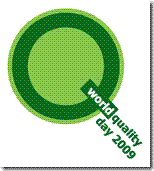Freemium is the future – and the future is now
/Earlier this week, two excellent blog posts—Three Ways to Start a Revolution by James Chartrand on Men with Pens, and Your Dream is Under Attack by Nathan Hangen on Copyblogger—discussed the somewhat polarizing debate about making money from blogging, which is one of many examples of the so-called “freemium” business model, which was first articulated in 2006 by venture capitalist Fred Wilson:
“Give your service away for free, acquire a lot of customers very efficiently through word of mouth and referral networks, then offer premium priced, value added services or an enhanced version of your service to your customer base.”
In 2009, Chris Anderson published the book Free: The Future of a Radical Price, which among numerous other coverage, was critically reviewed in the article Priced to Sell by Malcolm Gladwell, and discussed in an interview conducted by Charlie Rose.
Isn't everything on the Internet supposed to be free?
The freemium model, as well as the concept expressed in Anderson's book, is not entirely about the Internet. However, it is most often at the center of polarized debates because more and more businesses, in varying degrees, are becoming online businesses.
General public perception is that the Internet is free—getting on the Internet does have a cost (sometimes conveniently ignored), in terms of electricity, ISPs, and the various computer and mobile devices used to access it. However, once you are connected, the content on the Internet is either free or is supposed to be free—according to the “logic” of a very common perspective.
To be fair, this is somewhat understandable, especially given the fact that many of the most popular online services, such as Twitter, Facebook, and YouTube, to name but three examples from countless others, are in fact, free – and their users often defiantly claim that they would never pay any amount of money for such a service.
So how does the Internet make money?
The Internet has traditionally made money the same way broadcast television (also “free” when you conveniently ignore the cost of electricity, cable and satellite providers, and the various devices used to access it) has traditionally made money – advertising.
Paraphrasing (and oversimplifying) the words of Chris Anderson, the three generations of making money on the Internet:
- Pop-Up Ads – in the beginning was the Pop-up Ad—and it was not good. Do you still remember (or are you old enough to remember) the early days of the Internet? Nearly every website you visited brought the seemingly random attack of pop-up ads. Even after the invention of pop-up blockers and the advent of alternatives to pop-up ads, online advertising was not very context sensitive and not only annoying, but also largely ineffective.
- Google AdSense – the next generation of advertising was basically pioneered by Google (or companies they now own). Exemplified by the now somewhat ubiquitous Google AdSense, ads specific to website content provided online advertising that is both less annoying and seemingly far more effective.
- Freemium – we are just entering the third generation of making money on the Internet, and the first one not ruled by advertising—at least not advertising in the “traditional” sense. Under this new model, free online content is made available to everyone—providing the opportunity to “up-sell” premium content to a (typically small) percentage of your audience.
Freemium is NOT a new concept
Although many Internet users become seemingly outraged by the very notion of the option to purchase premium content, the idea of giving away something for free in order to facilitate a potential purchase is by no means a new concept.
Just a few simple examples include:
- Samples at the mall food court are free, but you have to pay to eat a full meal
- Movie previews are free, but you have to pay to watch an entire movie
- Broadcast television shows are free, but you have to pay for the DVD box sets
The Internet, however, has seemingly always been viewed as a special case.
I believe this is mostly due to the ratio of free to premium. Food samples, movie previews, and an individual episode of a television show, are small compared to the size of a full meal, a full-length movie, and a full season (or series) of episodes.
In other words, what we get for free isn't much, so paying for the rest makes more sense. On the Internet, this ratio is reversed.
Since almost everything on the Internet is free (again, after the cost of connection), we are genuinely, and perhaps really quite understandably, surprised or even annoyed when we encounter something that we are asked to pay for.
In other words, since we get so much for free, paying just to get a little more simply doesn't seem to make sense.
After all, if the full meals at the mall food court were free, we certainly wouldn't pay just to eat samples.
(And yes—I do realize that was a terrible analogy on so many levels—so please stop yelling at me.)
Isn't freemium the end of the world as we know it?
Obviously, the real issue is not the ratio of free to premium, or how much you should (or should not) expect to get for free.
The fundamental argument is that anything you pay for should be worth the price.
Historically, price has been the indicator of value, meaning something has value only if people are willing to pay for it. Higher prices, in theory at least, indicate higher value, especially if people are willing to purchase at the higher price.
So, if people are willing to pay for it, then this indicates there is a demand for it, for which a supply of it must be produced.
(And yes—I do realize that was a huge oversimplification of economic theory—so yet again, please stop yelling at me.)
One of the most common counter-arguments to the freemium model is that if price is allowed to essentially drop to zero, then there will be no way to accurately measure demand, which means there will be no way for content producers to determine what to supply. Furthermore, if almost everything is free, then why would content consumers be willing to pay for anything at all.
If nobody is willing to pay, then nobody can possibly get paid, and all online content will be completely user-generated, and following Andrew Keen's argument in The Cult of the Amateur, a cultural apocalypse occurs, which results in not only the Internet, but the entirety of human expression, being reduced to us hurling our feces at each other just like our primate cousins.
(You may feel free to resume yelling at me now.)
Freemium is the future—and the future is now
Obviously, the freemium business model doesn't only apply to blogging. By the way, it is totally understandable if you had forgotten that my lunatic fringe was ignited by the debate over making money from blogging.
Freemium is the future of most of the business world—and the harsh reality is—the future has already arrived.
In my opinion, too many people, companies, and in some cases, entire industries, are wasting their time, effort, and money trying to fight the unrelenting reality of freemium. Instead of refusing to accept that the price of what you are now offering may be falling essentially to zero—focus on creating something new that people would be willing to pay for.
Once again, to paraphrase Chris Anderson, “free” is only one of many markets—and only one of many additional pricing levels.
Don't stop at thinking about just two versions of each individual product or service—one free version and one premium version. You should be thinking about one free version and multiple tiers of premium. Value still drives price. Therefore, if you can truly add more value at each tier, then you can successfully demand a higher price.
Freemium works as a viable model because people will always be willing to pay a premium for something worth its price.
If you can't (or can no longer) produce something your customers are willing to pay for—that's your problem, not theirs.



